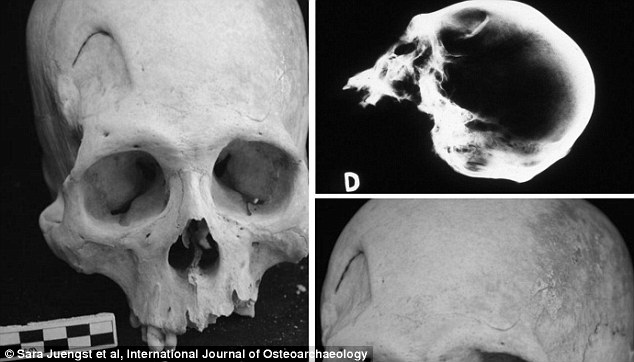More evidence of primitive brain surgery
Archaeologists have discovered an ancient skeleton in the Copacabana peninsula of Lake Titicaca, Bolivia. Research shows that brain surgery has been performed since primitive times with rudimentary techniques.
Ancient bone discovery demonstrates the process of primitive brain surgery
The latest news on the Daily Mail said archaeologists had suddenly discovered an ancient skeleton - the remains of violence since ancient times. At the same time, he also revealed evidence of how brain rescue surgery has existed since primitive times.
Today's Copacabana peninsula can be a magnet for adventurous adventurers on holiday but few know that it was once known as a "bloody" place more than 1,000 years ago.
The wide expanse of land protruding from Lake Titicaca, Bolivia is the territory of a group of people who are thought to regularly participate in catastrophic fighting.
The skeleton has revealed signs of violence like fractures, but the holes in the skull also show that the ancient culture used to perform cranial surgery to try to save lives. human. At the same time, the skull also revealed clues about rudimentary surgical techniques developed over time to achieve a higher success rate.

Archaeologists discover ancient skeletons that show many signs of brain surgery from primitive times
Accordingly, the Middle Ages in the Andes was a milestone of political and social turmoil in the two major nations Wari and Tiwanaku. Print research in the International Journal of Osteoarchaeology shows that skeletons bearing signs of violence are also found in Chile and Peru. They show that the power gap leads to widespread chaos.
However, the evidence of this dangerous period in the Titicaca basin is very small. In the mid-90s, nine skeletons were found buried in a circular burial ground on the ground in Ch'isi. The study found the age of death of prehistoric people now is between 18 and 50 years old.
In particular, all showed signs of violence. Four skeletons reveal clues that they were attacked by blunt weapons or pointedly hurt the face, ribs and arms. Moreover, they were also attacked much on the body.
Scientists say: " Understanding how traumas are affected will better understand the violence that ancient people encounter. The rate of fractures of the skull and face may indicate violence between Individuals together are frequent and relatively serious. "
In addition to wounds found everywhere on the male and female skeletons also found signs of wound healing . This shows that this is a sign that the whole community is often attacked, not an individual or a fixed ceremony.

According to archeology, traces on ancient skeletons indicate victims were attacked with sharp objects
Archaeologists point out, most wounds have healed completely with little or almost no signs of infection or other complications due to injuries. This may reflect that prehistoric people have received medical treatment or are taken care of by other individuals.
The presence of surgical interventions in the form of bone drilling (Trepanation) emphasizes the level of medical technology now. Trepanation bone drilling is an ancient form of cranial surgery, used for medical purposes involving the removal of skull bones.
Peruvian mummies show that humans at that time used metal tools to perform this surgery, although no specific evidence was found. However, there was evidence that a middle-aged woman seemed to have survived Trepanation bone augmentation surgery.
The victim may have had surgery to reduce the pressure in the skull due to hemorrhage as a result of a strong blow to the head. This technique seems to help patients have a higher survival rate because primitive doctors have learned from past mistakes. Evidence shows that a society is extremely violent but medical knowledge is extremely developed.
- Evidence of a neck brain surgery
- Mysterious skull surgery 2300 years ago
- Giggles all day because of surgery
- Human brain surgery from 4,000 years ago
- Play the piano and sing while being brain surgery
- Brain surgery can take place 3,000 years ago
- 'Artificial' doctors perform brain surgery super fast, only 2.5 minutes instead of 2 hours
- Australian doctor for brain tumor surgery for goldfish
- The man suddenly spoke French fluently after the brain surgery
- Singer comfortably sings opera during brain tumor surgery
- Listening to music during surgery helps protect brain cells
- Find new ways to treat brain tumors without surgery
 Discovered an ancient centipede fossil 99 million years old
Discovered an ancient centipede fossil 99 million years old Discovered bat-like dinosaurs in China
Discovered bat-like dinosaurs in China Discovered a 200-year-old bronze cannon of the coast
Discovered a 200-year-old bronze cannon of the coast Discover 305 million-year-old spider fossils
Discover 305 million-year-old spider fossils